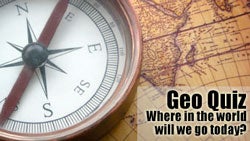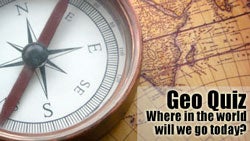 August 8, 2008 — How about exploring the maritime cultural landscapes of Placentia Bay and the Grand Banks, Newfoundland? Graduate School of Oceanography marine research scientist Dwight F. Coleman shared his recent explorations there while aboard URI’s Endeavor for this week’s Geo Quiz on the PRI program, “The World.” Click on the image to hear the program.
August 8, 2008 — How about exploring the maritime cultural landscapes of Placentia Bay and the Grand Banks, Newfoundland? Graduate School of Oceanography marine research scientist Dwight F. Coleman shared his recent explorations there while aboard URI’s Endeavor for this week’s Geo Quiz on the PRI program, “The World.” Click on the image to hear the program.
Here’s how Coleman described the Grand Banks of Newfoundland:
“This is an interesting place geologically, biologically, and archaeologically. It represents a large, flat, extension of the continental shelf that was glaciated and exposed during the last Ice Age when sea level was much lower. In fact, the last Pleistocene humans and mammals may have migrated through that landscape more than 10,000 years ago. It is has a depth less than 100 meters today, and has been heavily fished for hundreds of years. The geologists are interested in the glacial history and structure of the Grand Banks, biologists are interested in the seafloor habitat and fisheries, and archaeologists are interested in the maritime history and shipwrecks of the Grand Banks.”
About the research he explained: “We used a suite of underwater technological tools to map the seafloor using acoustics. We used a side-scan sonar towfish and an autonomous undersea vehicle and a remotely operated vehicle to collect data. We found several shipwrecks and many other targets that could represent cultural material on the seafloor. We hope to go back and continue this long-term program in future years as our project is designed to generate important data and identify significant submerged cultural resource.”
The Endeavor traveled to this area with support from a partnership between the University of Rhode Island, the Sea Education Association, the Government of Newfoundland and Labrador, and Memorial University, Newfoundland.
Read more about this voyage at Immersion Presents.

